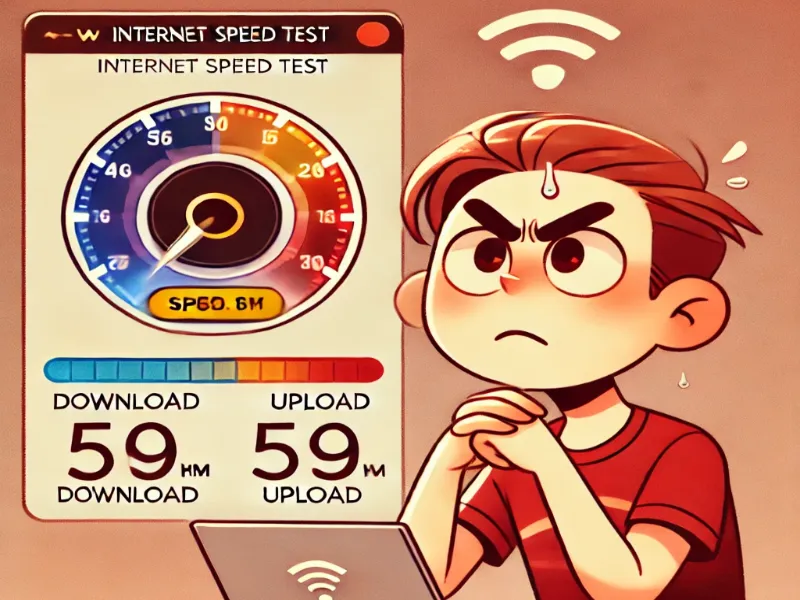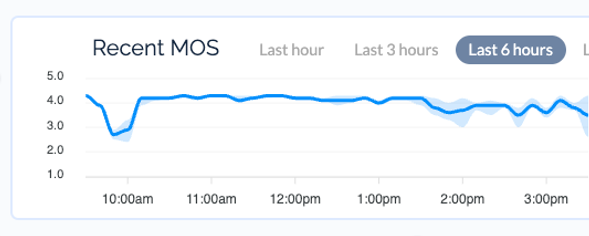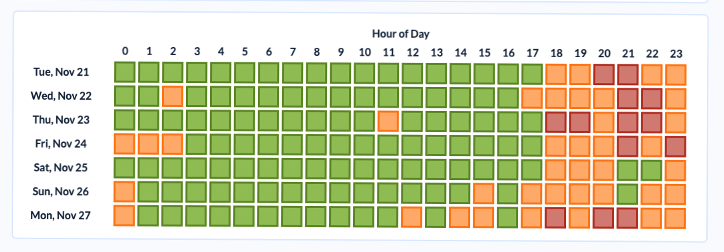
The quick answer is that internet speed tests are concerned with bandwidth (or quantity) whereas VoIP Spear tests the quality of your internet connection. This is important because network quality is critical for real-time services (like voice, video calls, video games) over the internet.
A more detailed answer is below.
Internet speed tests are primarily concerned with bandwidth. In other words, they test the amount (or quantity) of data you can send across your internet connection.
Bandwidth is plentiful these days. My local ISP’s entry-level internet service comes with 75Mbps. This is pretty typical in North America though many service providers offer even more bandwidth. A VoIP call takes about 0.1Mbps and a Teams/Zoom call about 1.5Mbps. Thus, the entry-level service supports about 750 simultaneous VoIP calls and 50 simultaneous Teams calls/streams!
So if the entry-level internet service provides hundreds of times as much bandwidth as is needed for a voice call, then how can it be that we sometimes have voice quality issues?
The reason is because the quality of the network connection matters, not just the quantity (bandwidth).
Network quality is determined not by bandwidth, but by packet loss, latency and jitter. VoIP Spear monitors these characteristics and uses them to calculate a score between 1 and 5 that tells you good (high score) or bad (low score) your internet is.
The internet speed tests do a test at a single point in time. This usually takes around 10-30 seconds, so you get an idea of your bandwidth (i.e., quantity) for a single 30-second period of time.
Doing a single point-in-time test like this is futile because network issues are intermittent meaning that they occur irregularly. Furthermore, network quality issues are relatively rare – they start to become a pain when they occur about 1% of the time. Thus, if you’re just running a test for a 30-second period of time, there’s only a 1% chance that the test will catch the problem.
Rather than a single point-in-time test, it’s essential to monitor continually. VoIP Spear does this – it monitors your network every 60 seconds, all day, every day.
The chart below shows network quality over a 6-hour period. Viewing the information in this format enables you to quickly see fluctuations in quality with a single glance. It’s easy to tell when the quality is good (a high score) or when it’s bad (a low score).

Using the chart, you can look back in time and see what was happening when you experienced your issues. In this case, we see a significant degradation in quality at approximately 9:30am. There is another issue that starts at about 1:30pm although this one is more subtle.
The next screenshot shows what we can do when we have historical data … we can use it to find patterns. Take a look and see if you spot any patterns.

The pattern we see is that the network quality typically starts to degrade late in the day. This same pattern was present when we investigated and looked at other weeks.
Troubleshooting in this fashion -- to look for patterns in your network issues or to drill down into specific problems -- is where VoIP Spear shines. We plan to post more stories like this in the coming weeks. In the meantime, do you have a story network quality to tell?